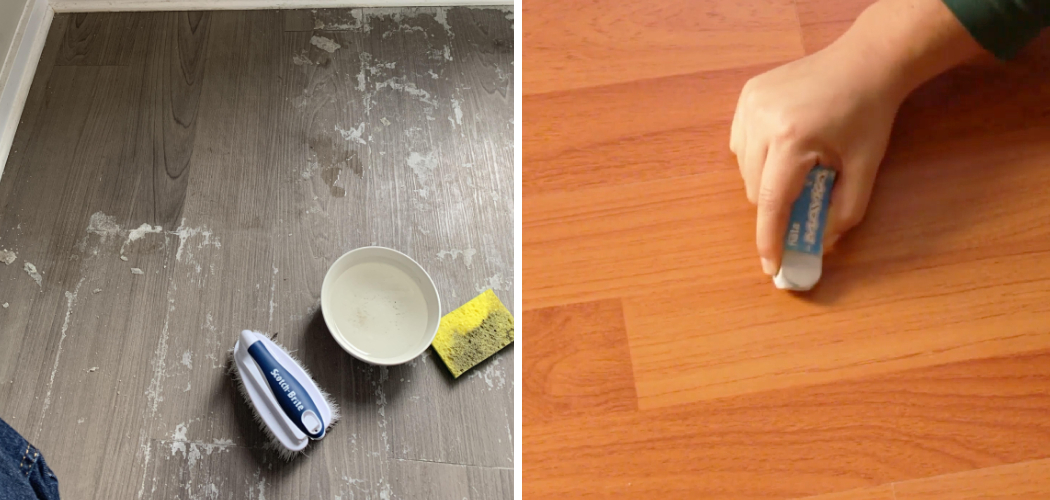Salt is not just for the dinner table – it can also be a stubborn problem around your home! Look no further if you have laminate floors and are wondering how to clean salt off.
In this blog, we’ll discuss essential tips on how to clean salt off laminate floors to ensure that they remain free of stains and look their best. With the right approach, you’ll soon be able to rid your laminate floors of pesky salt deposits! So read on to learn more about effective methods for cleaning away any lingering salt, making sure those floors shine like new for years to come.
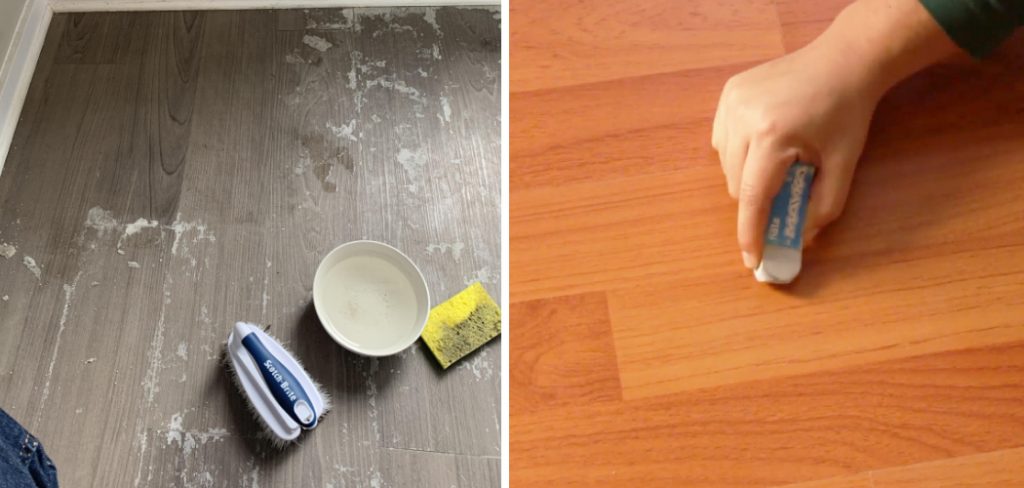
9 Best Ways on How to Clean Salt Off Laminate Floors
1. Sweep the Floors:
Sweeping is one of the essential steps on how to clean salt off laminate floors. Start by vacuuming up any loose dirt and debris, then use a soft-bristled broom to sweep away any stubborn salt deposits and residue that may be stuck in between crevices or other hard-to-reach places. This method will also help capture any salt that has been tracked in from outside, preventing further damage to the laminate.
2. Use a Mop and Cleaner:
Once you have swept away the loose salt, it’s time to use a mop and cleaner to tackle any remaining residue. Be sure to select a cleaner that is specifically designed for use on laminate floors, as some chemical-based cleaners could damage the delicate surface.
After you have selected an appropriate cleaner, dampen your mop and dip it into the cleaning solution. Then wring out the excess water before lightly scrubbing and buffing away any remaining salt deposits. Make sure to scrub in a circular motion to ensure that all areas of the floor are properly covered.
3. Rinse with Water:
Once you have finished scrubbing, it’s important to rinse away any remaining detergent residue that may be left on the surface of your laminate floors. To do this, fill a bucket with warm water and lightly mop across the floors to loosen up any excess detergent. Be sure to wring out the mop before each pass to reduce the risk of water damage.
4. Dry the Floors:
Drying your laminate floors after cleaning is a crucial step in how to clean salt off of them. To dry the flooring, take a microfiber cloth or towel and lightly dab it across the surface of the laminate. This will help absorb any excess moisture on the floors before it can cause damage. Alternatively, you can use a fan or dryer to speed up the drying process.
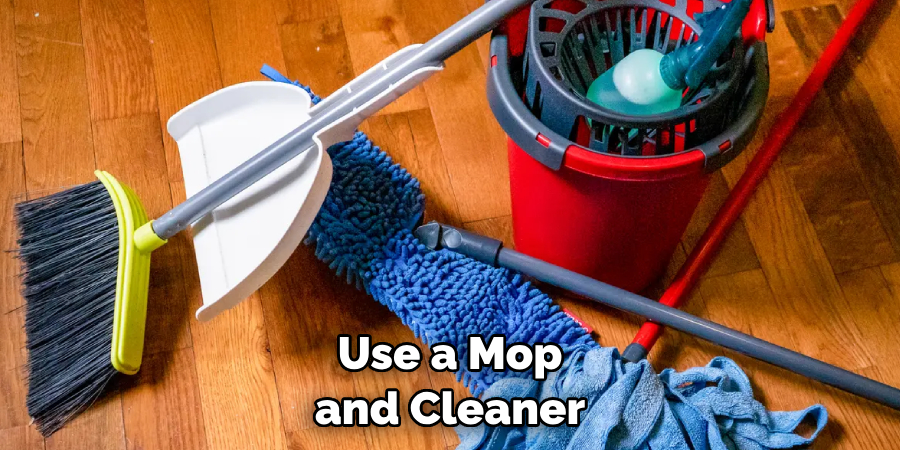
5. Protect with Wax:
To ensure that your laminate floors remain free from salt in the future, it’s important to treat them regularly with a protective layer of wax. Look for water-resistant or sealant waxes that are specifically designed for use on laminate floors.
After applying the wax, allow it to sit for a few minutes before buffing away any excess with a soft cloth or towel. Doing this will help create an additional layer of protection against salt and other elements that may damage your flooring over time.
6. Use an Ice Cube:
If you’re dealing with a particularly stubborn salt deposit, you may want to try using an ice cube to help remove it. Simply place the ice cube over the spot for several minutes, allowing the cold temperature to cause the salt to contract and loosen up. Then use a mop or cloth to wipe away any remaining residue.
7. Apply White Vinegar:
White vinegar is a natural and effective way to get rid of any lingering salt deposits that are stuck on your laminate floors. Simply create a solution of one part white vinegar to two parts warm water, then use a mop to lightly scrub the affected areas with the mixture. Allow it to sit for several minutes before rinsing away with clean water.
8. Use a Steam Cleaner:
Steam cleaning is a great way to deep clean your laminate floors without the need for harsh chemicals or abrasive scrubbing. Not only does it help remove any lingering salt deposits, but it also helps get rid of bacteria and other dirt and grime that can accumulate on flooring over time.
Make sure to use a low-pressure steam cleaner and only run it over the flooring for a few seconds at a time, as too much heat could damage the delicate laminate surface.
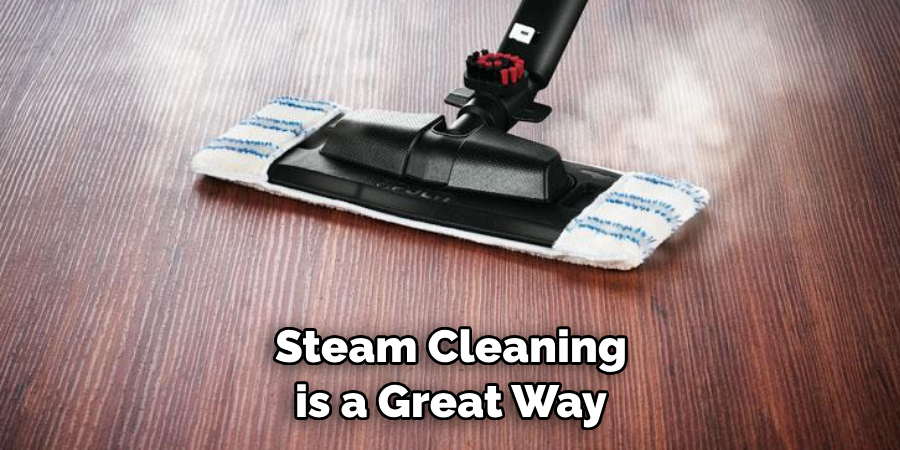
9. Add Area Rugs:
Adding area rugs is an easy way to prevent salt from getting onto your laminate floors in the first place. Place rugs in areas that experience excess foot traffic, such as entryways or hallways, to catch any salt and dirt before it has a chance to make its way onto your floors. This is especially helpful during winter months when snow and ice are more likely to be tracked into the home.
By following these tips on how to clean salt off laminate floors, you’ll be able to keep your beautiful flooring looking its best with minimal effort! With the right cleaning routine and a few preventative measures, your laminate floors will stay free from any stubborn stains for years to come.
Additional Tips and Tricks to Clean Salt Off Laminate Floors
1. Try to vacuum the salt off of your laminate floor first. This will help reduce the amount of cleaning needed and can be a much quicker process.
2. If you need to use water to clean your floors, use as little as possible. Excess scrubbing or water on laminate flooring can cause damage over time.
3. If any residue is left behind after the cleaning process, use a microfiber cloth and vinegar to clean it. This will help ensure that all of the salt is removed.
4. Make sure to dry your laminate flooring quickly after cleaning with water or vinegar. Leaving dampness on floors can cause them to warp over time.
5. Consider investing in a good vacuum cleaner that is specifically designed for hard floors, such as laminate. This will help you keep your floors clean and salt-free on a regular basis.
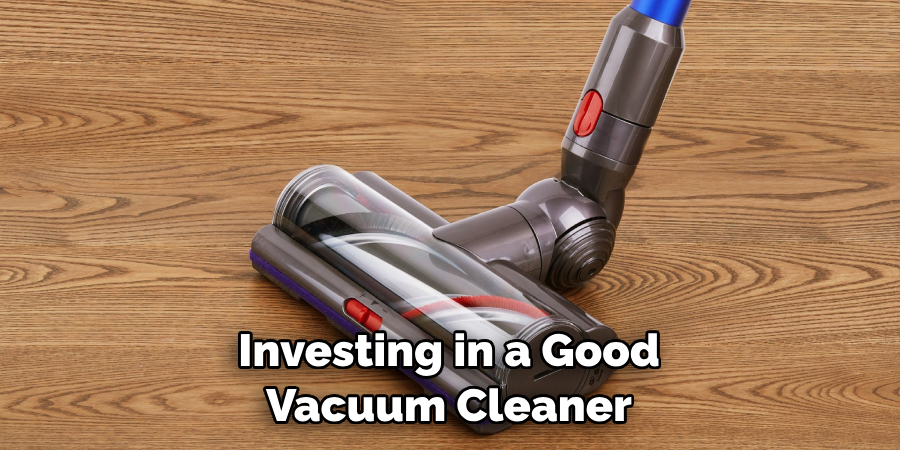
6. If there are still stains left on the floor from the salt, try using a mixture of equal parts vinegar and water to remove them. The acidity in the vinegar can help break down any lingering particles.
7. To help prevent salt from building up on your floors in the future, consider using a doormat outside of each entrance to your home. This will help reduce the amount of salt that gets tracked inside.
8. For any especially stubborn stains, use a scrub brush and a mild detergent to remove them. Be sure not to use too much pressure, as this could cause damage to your floors.
9. After scrubbing the affected area, be sure to rinse and dry it immediately. This will help keep your laminate flooring looking like new for years to come.
10. Finally, remember that regular vacuuming and sweeping can go a long way in preventing salt buildup on laminate floors. Taking the time to do a quick sweep once or twice a week can make all the difference!
Following these tips and tricks will help keep your laminate floors clean and salt-free for years to come. Regular maintenance is the key to keeping your floors in top condition, so be sure to clean them often. With a little bit of care and attention, you can keep your laminate flooring looking like new!
Frequently Asked Questions
Is It Harder to Clean a Laminate Floor Than Other Floors?
No, cleaning a laminate floor is not any more difficult than cleaning other types of floors. In fact, because laminate floors are often resistant to water damage and staining, they can be cleaned using less harsh chemicals that may be used on other floors. However, always be sure to check the manufacturer’s instructions before beginning any cleaning process.
What Should I Do If I Accidentally Spill Salt on My Laminate Floor?
If you accidentally spill salt on your laminate floor, it is important to act quickly and clean up the spill as soon as possible. Using a soft cloth or paper towel, blot up as much of the salt as possible. Then, dampen a cloth with warm water and gently wipe away any remaining salt residue.
Finally, dry the area thoroughly with a clean cloth or paper towel. It is important to avoid using harsh chemicals or rubbing too hard on the laminate floor, as this could cause damage to its finish.
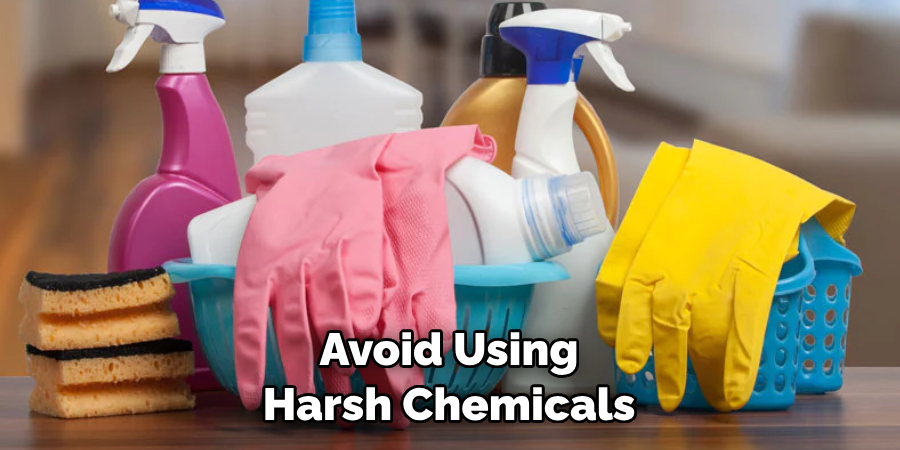
Are There Any Special Cleaning Products Recommended for Laminate Floors?
Yes, there are a number of specially formulated cleaning products that can be used on laminate floors. Many of these products contain mild detergents and emulsifiers that help to easily dissolve dirt and grime. When selecting a product, always read the label carefully to make sure it is safe to use on laminate floors.
Additionally, it is important to avoid using overly abrasive or acidic cleaning products as these may cause damage to the finish on your floor.
Conclusion
All in all, knowing how to clean salt off laminate floors is an important part of properly maintaining your floor. When cleaning, it is important to act quickly and use gentle methods to avoid causing damage to the finish.
Additionally, specially formulated cleaning products can be used for the best results. With proper maintenance, you can ensure that your laminate floor looks beautiful and remains in great condition for years to come.
